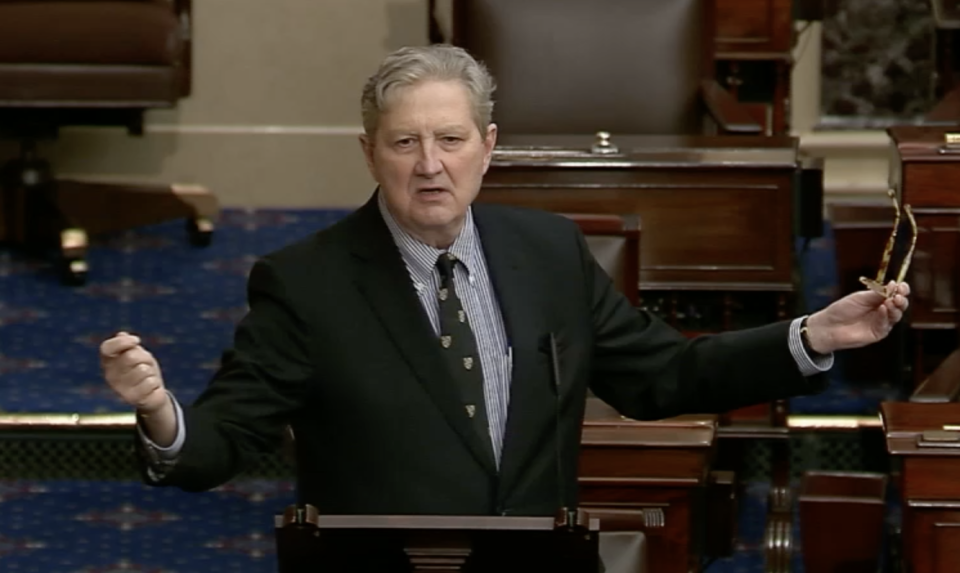Mabel Hackman
October 2, 2007In the mood for a good read? Consider Alda’s life musings or a cop’s tale
October 4, 2007Several Terrebonne Parish officials met with representatives of the Shaw Group on Sept. 25 to update the parish’s application for federal flood prevention money.
Terrebonne Parish hired the Baton Rouge engineering firm to help compile a list of structures in the parish eligible for FEMA Hazard Mitigation Grant Program funds.
The Shaw Group began the process in May, and expects to compile the list by May 2008.
“It’s an application for Hazard Mitigation funds-the natural hazards the parish might face-to minimize future losses,” said Keith Boeneke, Shaw Group project manager.
A state Office of Homeland Security and Emergency Preparedness official at the meeting said, “We’re focusing on things that have known value.”
“We’re gathering data needed to complete an application package,” said Parish Zoning Director Pat Gordon, who attended the meeting.
Terrebonne Parish is required to provide a 25 percent match on the FEMA Hazard Mitigation money, though Gordon said the parish will be able to tap into other funding sources to make the match.
The facilities deemed critical by the parish for hardening against flooding are hospitals, major employers, police and fire stations, emergency operations centers, schools, power plants, potable water sources, and sewerage lines.
More generally, the list takes in industrial sites, historical sites and grocery stores.
Boeneke said Terrebonne has 32 major employers, with Terrebonne General Medical Center being the largest. A committee member pointed out that Terrebonne General is both a critical structure hospital, and a major employer.
Another member urged the parish to get the critical structures on the list to receive federal flood-prevention funds.
“If it’s not eligible, at least we tried,” he said.
Boeneke said Terrebonne has over 400 repetitive loss structures, a term used by the insurance industry to classify buildings filing more than one loss claim.
He asked the meeting participants whether any more sites needed to be added to the roster.
The parish is expected to finalize the list of structures needing flood-prevention funds in around two months.
Until then, the Shaw Group is looking for input from the 33-member Terrebonne Parish Hazard Mitigation Plan Update Committee. The steering committee consists of Gordon, Parish Public Works Director Al Levron, Parish Manager Barry Blackwell, Terrebonne Levee & Conservation District Executive Director Jerome Zeringue, Parish Office of Homeland Security and Emergency Preparedness Director Michael Deroche, and engineer David Waitz.
Boeneke began his presentation with the basics. He showed maps of Terrebonne Parish, singling out Schriever, Bayou Cane, Chauvin and Montegut.
“We need to know where these communities are located,” he said, indicating that almost half of Terrebonne Parish is water.
In response to a question from Boeneke, Gordon said Terrebonne has a land use map showing projected use patterns. The entire parish is not zoned, but Bayou Cane and parts of La. Hwy. 311 were recently zoned.
Boeneke brought up the fact that Terrebonne Parish has no hurricane protection levees, so no federal supervision can exist over those structures. However, the parish has forced drainage levees.
“With rain, you’re OK,” he said. “It’s the storm surge.”
The steering committee was asked by the Shaw Group to identify recent benchmark hurricanes which affected Terrebonne Parish.
The committee named hurricanes Betsy (1965), Juan (1985), Andrew (1992), Lili (2002), and Rita (2005).
Boeneke displayed Terrebonne Parish inundation maps for all those storms. A composite map of all five hurricanes showed nearly the entire parish flooded except for the ridges along both sides of bayous.
Gordon said Rita was the biggest flooding event, followed by Juan, which poured almost 18 inches of rain on Galliano.
He said the two maps from Rita and Juan combined could make an accurate parish inundation map.
For residential structures, Boeneke said FEMA Hazard Mitigation funds could pay for acquiring flood-prone property, elevating homes, improving drainage, building safe rooms, and flood proofing.
Buying property outright to remove a structure from a flood zone is the preferred option, he said.
Community shelters are the only new construction eligible for the Hazard Mitigation grants.
Flood proofing takes in both dry flood proofing (sealing a structure to keep water out), and wet proofing (minimizing water damage inside a structure).
The state’s Hazard Mitigation Plan, issued before hurricanes Rita and Katrina in April 2005, places Terrebonne Parish in the top four of all parishes in Louisiana in four different natural hazard risk categories.
The parish ranked third in annual monetary losses suffered from storm surge, third in land lost from subsidence, third in yearly economic losses from hurricane high winds, and fourth in annual monetary losses from flooding.
Since the assessment was performed before the 2005 hurricanes, losses suffered in Plaquemines, St. Bernard and St. Tammany from the effects of the hurricanes would place those parishes in a higher ranking today.










